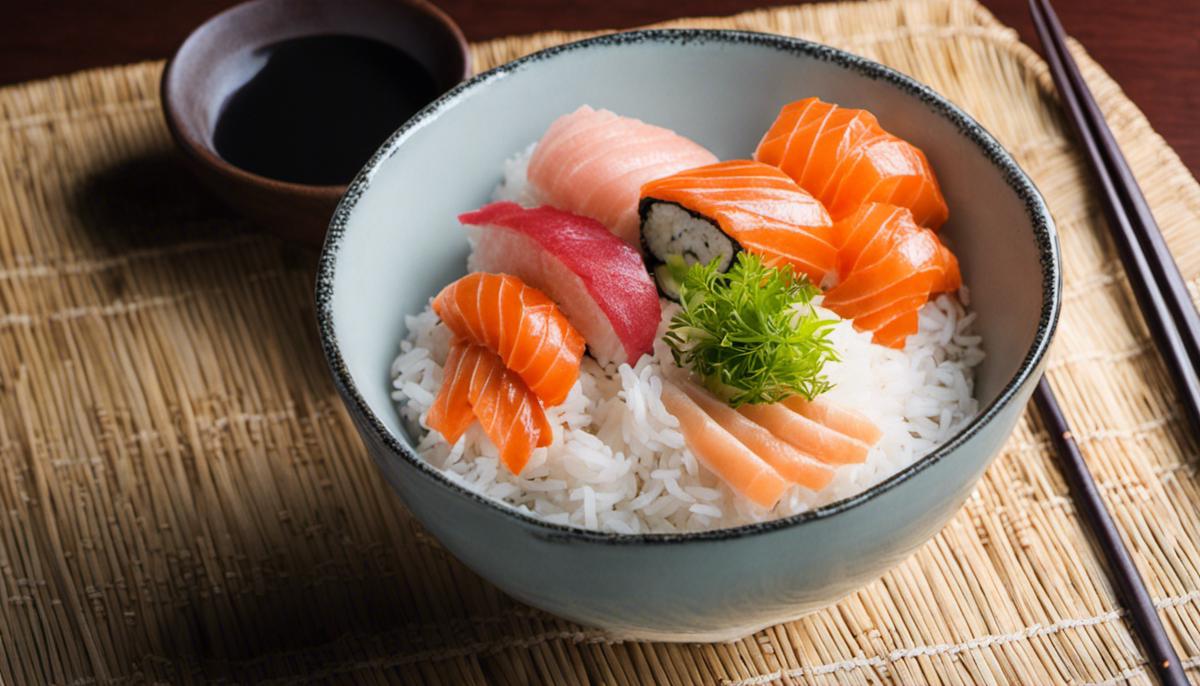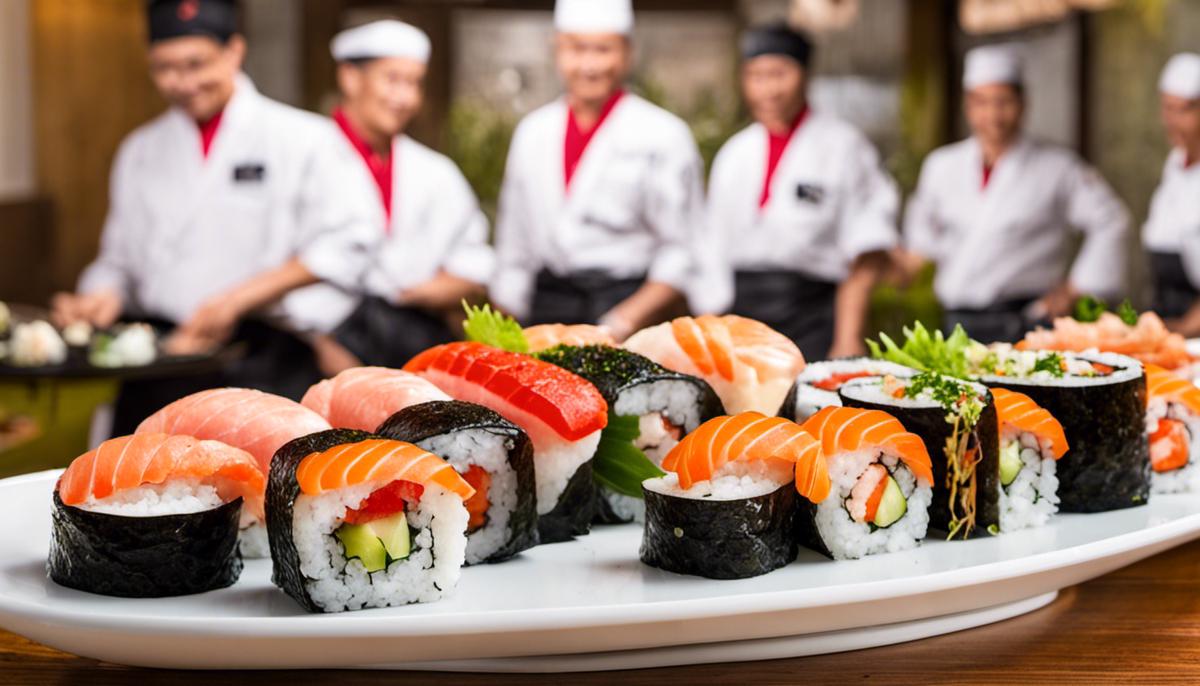Sushi is a globally popular dish that originated in Japan. Many people may be intimidated by making sushi themselves, especially if they’re not comfortable with or allergic to the traditional use of nori—the edible seaweed often used as a wrapper for the roll. Luckily, there are other ways to create a delicious sushi roll that doesn’t require nori. If you see yourself as an avid home cook or sushi lover and are interested in expanding your knowledge and skills about sushi, we will focus on the following key activities: choosing the right ingredients, preparing the sushi rice and ultimately rolling the sushi without the use of nori.
Choosing the right ingredients
When it comes to sophisticated taste and appealing aesthetics, few things offer more style points than sushi. While traditional sushi is made with nori sushi seaweed , it can be daunting for some to venture into the real thing. Luckily, there’s a world of no-nori sushi to explore that’s just as trendy and delicious. Here are the ingredients you’ll need to make your own sushi without nori at home.
First of all, the basics: sushi rice. This special sticky rice is the backbone of any sushi dish. Look for quality brands to make sure you’re getting the most out of your homemade sushi.
Next up are the fillings. Here you can give free rein to your creativity. Popular choices include fresh tuna, salmon, or crab meat. If you opt for a leaner option, avocado and pickled radish are great alternatives. You can also experiment with grilled chicken or tofu .
When choosing sauces, look for tasty options such as soy sauce, wasabi , and pickled ginger . These ingredients add both color and depth to your sushi.
Our last main ingredient is the choice of wrapping material. Since we’re skipping nori, you can use paper-thin slices of cucumber or soybean paper instead. Both options give the perfect structure to an aesthetic and unforgettable bite.
To make this lifestyle dish, start with the sushi rice. Rinse and cook according to package instructions. While the rice is cooking, prepare your fillings. Cut your proteins and vegetables into thin strips for easy handling.
When the rice is done, spread a thin layer on top of your cucumber or soybean paper. Next, add the fillings and gently roll them into a tight roll. Cut the roll into bite-sized pieces and serve with your sauces and spices.
Creating sushi without nori at home is not only a fabulous way to showcase your cooking skills, but it’s also a fun and creative way to spice up your diet. Make sure you choose all the ingredients carefully, because quality is the key to success here. Get inspired and invent your own sushi creations. Happy Sushi-Making!

Preparation of sushi rice
Transition to the preparation of the sushi rice
Well, let’s get ready for the centerpiece of any sushi creation: the perfectly cooked sushi rice. Indispensable, rich in flavor and texture, this particular rice is what excites a true sushi lover.
Choosing the optimal travel
To make sushi, a special rice known as “Shari” is needed. This extremely sticky and short-grained rice is particularly suitable for this, as it does not fall apart during rolling. So, the first rule in the art of sushi making is to use the right rice.
Preparation of the rice
First, start by washing your rice thoroughly. This step is crucial to getting rid of excess starch that could otherwise distort the flavor. Fill a bowl with cold water and submerge the rice. Gently rub the grains between your fingers and change the water if it becomes cloudy. Repeat this process until the water runs clear.
Cooking
After washing and draining the rice, cooking follows. The rice is cooked in a ratio of 1:1.2, i.e. there are about 1.2 cups of water for every cup of rice. In a rice cooker or on the stovetop, simmer the rice for about 15 minutes until all the water is absorbed. After that, remove it from the heat and let the rice sit for another 10 minutes or so to complete the steaming process.
Seasoning the rice
Finally, the seasoning is added: a mixture of rice vinegar, sugar and salt. Stir in a saucepan over medium heat until sugar and salt are completely dissolved. Place the rice in a wooden or glass bowl and drizzle the seasoning over it. Stir with a special flat wooden spoon in gentle transverse motions to surface the rice and increase the shine without crushing the grains.
Now that the rice is ready to be turned into your sushi rolls, who would have thought that so much care and precision would go into something as seemingly simple as rice? But that’s exactly the art of sushi making: getting the most out of simple, high-quality ingredients to create a gastronomic masterpiece. Well, go and let your culinary creativity run wild. Sushi is not a rigid concept, but a room for experimentation!

Sushi rolls without nori
The presentation of your sushi without nori
Now that we’ve thoroughly covered ourselves with the selection and preparation of ingredients for our no-nori sushi, let’s talk about the presentation. It’s a well-known fact – the eye eats with you. An aesthetically pleasing dish can whet our appetite and enhance the overall experience of eating. Therefore, the presentation of your sushi is just as important as the ingredients and techniques you use.
Aesthetics is no coincidence. You’ll need an eye for color, texture, and proportions to create appealing sushi rolls. For the most beautiful presentation, use differently colored fillings. Colors such as the pink of tuna, the green of avocado and the white of crab meat create a colorful contrast to the neutral color of the rice.
Think of your sushi roll as a small art installation. Place them on a clean, minimalist plate or on rustic wood for a natural look. Be sure to leave enough space between the reels. As in interior design, the right amount of “white space” provides a visual break when it comes to dining and helps improve your design.
Arranging the sushi is also an important step. A simple, linear alignment of the rolls is classic and allows the colors and shapes of the sushi rolls to come out. However, you can also experiment with creative arrangements, such as arranging the reels in a spiral or circle.
Ultimately, the trappings also play a role. Garnish your plate with pickled ginger or a small bowl of soy sauce. You could also add fresh flowers or bamboo leaves, for an authentic Japanese aesthetic.
And let’s not forget the final step – photography! Show off your creations on social media and impress your followers with your artistic talent and gastronomic knowledge.
As always, let your creativity take the lead and try out new ideas. There are no hard and fast rules, and the process should be fun. So go ahead and share your sushi roll creations. Happy rolling!

Overall, making your own sushi rolls from scratch is a wonderful and satisfying experience – especially when exploring new techniques like rolling sushi without nori. By learning how to choose the right ingredients, perfect preparation of sushi rice and different rolling techniques, you will open up a whole new world of sushi preparation. With practice and patience, you’ll master these skills and be able to serve the perfect, noria-free sushi roll. Don’t hesitate to get creative and experiment with new ingredients. The real pleasure in the preparation of sushi lies in the artisanal examination of the ingredients to finally create an enchanting and delicious delicacy.


